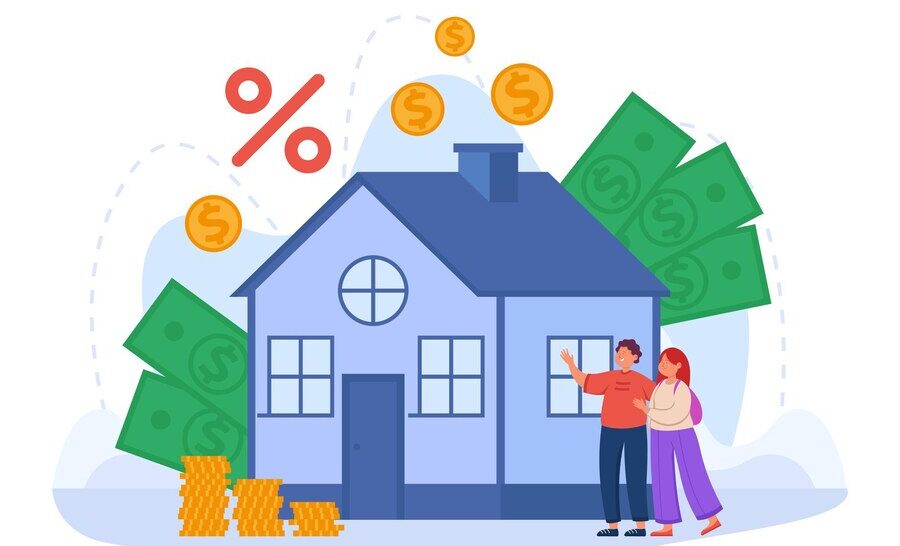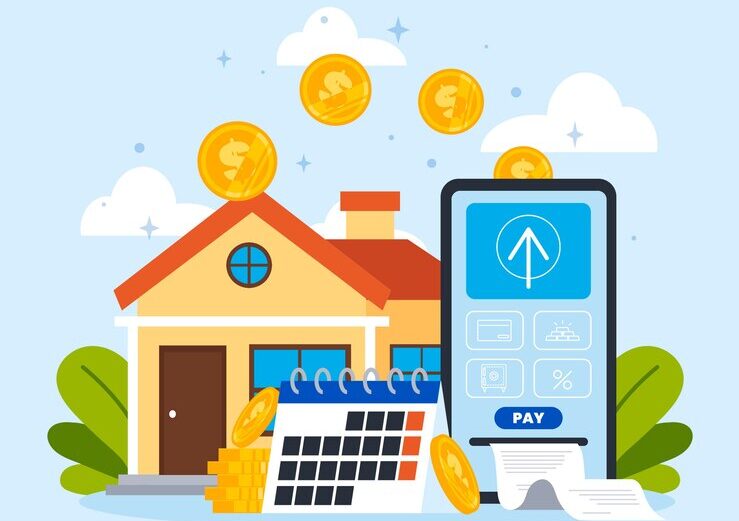Top 5 Major Factors That Impact Your Home Loan EMI
For many of us, taking out a home loan is a crucial part of that journey, and with it comes a term we often hear but might not fully grasp: EMI or Equated Monthly Instalment. Think of your EMI as a monthly commitment, a fixed amount you promise to pay your bank until you’ve settled your home loan. It’s kind of like a monthly subscription, but for owning your dream home. Now, wouldn’t it be handy to know what makes this monthly amount go up or down? After all, a smart home buyer isn’t just one who finds the perfect home, but also one who understands the bits and bobs of their home loan rates and EMI.
Top 5 Major Factors That Impact Your Home Loan EMI

Loan Amount
Let’s kick things off with the most obvious factor – the loan amount, which is simply how much you borrow from the bank. Think of it this way: if you’re borrowing a larger sum, naturally, your monthly repayments (or EMIs) will be more significant. Imagine borrowing ₹10 lakhs versus ₹50 lakhs. With the latter, there’s a bigger chunk of money to pay back, right? So, the EMI for ₹50 lakhs will be more substantial than for ₹10 lakhs, given other factors remain constant.
But here’s a twist! The relationship between your loan amount and EMI isn’t always straightforward. For example, let’s say Aisha borrows ₹30 lakhs for 10 years, and Rohan borrows the same amount but for 20 years. Even though they’ve borrowed the same sum, Rohan’s EMI might be lower because he’s spreading his repayments over a longer period. But remember, the longer the tenure, the more interest you might end up paying. So, it’s essential to strike the right balance to ensure your EMIs are comfortable without you paying a ton more in interest over the years.
Interest Rate
Next up, let’s dive into the world of interest rates, which, simply put, is the cost of borrowing money. It’s a bit like renting a book: the price (or interest) you pay depends on how popular or rare the book is. In the world of home loans, interest rates can usually be bucketed into two types: fixed and floating.
With fixed rates, as the name suggests, your interest rate remains constant. Whether the market interest rates go up like a rocket or drop like a hat, your rate will stay the same. Sounds safe and predictable, right? On the other hand, floating rates bob up and down based on market conditions. They might start lower than fixed rates, but there’s always the element of unpredictability.
Now, how does this relate to your EMI? If your interest rate rises, your EMI might go up, especially if you’re on a floating rate. Conversely, if the interest rate drops, you could be doing a little happy dance because your EMI might just go down too!
Loan Tenure
Now, imagine you’ve bought a super-sized tub of ice cream. If you plan to finish it in one go, each bite will be pretty big. But if you decide to savor it over a week, each serving becomes smaller. That’s the concept of loan tenure for you. It’s basically the time you decide to repay your loan.
The longer your loan tenure, the smaller your EMIs, because you’re spreading out your repayments. Sounds tempting, doesn’t it? But here’s the kicker: a longer tenure might mean you’ll end up paying more in interest over the years. On the flip side, a shorter tenure would mean higher EMIs, but you’d be free from your loan quicker and probably pay less interest overall.
So, is it better to go short and intense or long and steady? It all boils down to what you’re comfortable with. If you have a stable income and can afford heftier EMIs, you might want to wrap up the loan quickly. But if you want to keep monthly expenses lower, stretching out the tenure could be your game. Either way, just ensure your ice cream (read: home loan) doesn’t melt away before you enjoy it!
Type of Home Loan
Alright, let’s step into the realm of home loans. Just like you’ve got myriad flavours at your favourite ice cream parlor, there are different types of home loans to pick from – primarily fixed, floating, and hybrid. And, believe it or not, the type you choose can make your EMI go up, down, or even dance a little jig in between!
With a fixed-rate loan, the EMI remains constant throughout the loan period. It’s like vanilla ice cream – simple and no surprises! Then there’s the floating-rate loan, which varies with market dynamics. So, if market rates dive, your EMI could decrease, but if they soar, your monthly outgo might increase. This one’s a bit like that unexpected chilly aftertaste in a scoop of mint chocolate.
And then we have the hybrid loans, which try to serve up the best of both worlds. For a specified period, you’re on a fixed rate, and post that, the loan turns floating. It’s like a sundae, with a bit of this and a bit of that!
Additional Charges
Hold on! Before you dive headfirst into your home loan, there’s more to it than just the interest. We’re talking about those sneaky little costs that sometimes don’t make it to the flashy brochures – things like processing fees, prepayment penalties, and others.
Think of processing fees as the entry ticket to the home loan club. Lenders charge this fee to cover the costs of assessing your loan application. It might seem small but can add to your initial costs. Then there’s the prepayment penalty. Let’s say you’ve stumbled upon some extra cash (birthday gift, perhaps?) and thought of paying off a chunk of your loan. Some lenders, though not all, might charge you for this, especially if you’re on a fixed rate.
These extra charges can affect your loan’s overall cost. They might not directly alter your EMI, but they do play a role in the total amount you shell out. It’s a bit like ordering a pizza and realising the toppings cost extra. Always good to be in the know, right? So, read the fine print and ask questions. Your future self will thank you!
Conclusion
So, just wrapped up our little rollercoaster through the world of home loan EMIs, didn’t we? Let’s take a quick pit stop and recall our journey: from the basic loan amount and those ever-fluctuating interest rates to the loan’s lifespan, the specific type of home loan you’re eyeing, and those sneaky additional charges – each of these plays a pivotal role in determining that monthly cheque you’ll be writing.
Remember, a home loan isn’t just any other purchase – it’s a commitment, often stretching over decades. And that EMI? It’s like a monthly subscription to your dream home. So, when you’re on the brink of making such a monumental decision, it’s crucial to play detective with these factors. Dive deep, keep the documents for housing loan ready, ask questions, and choose wisely. After all, the house might be built of bricks and mortar, but it’s the EMI that builds your future!

















